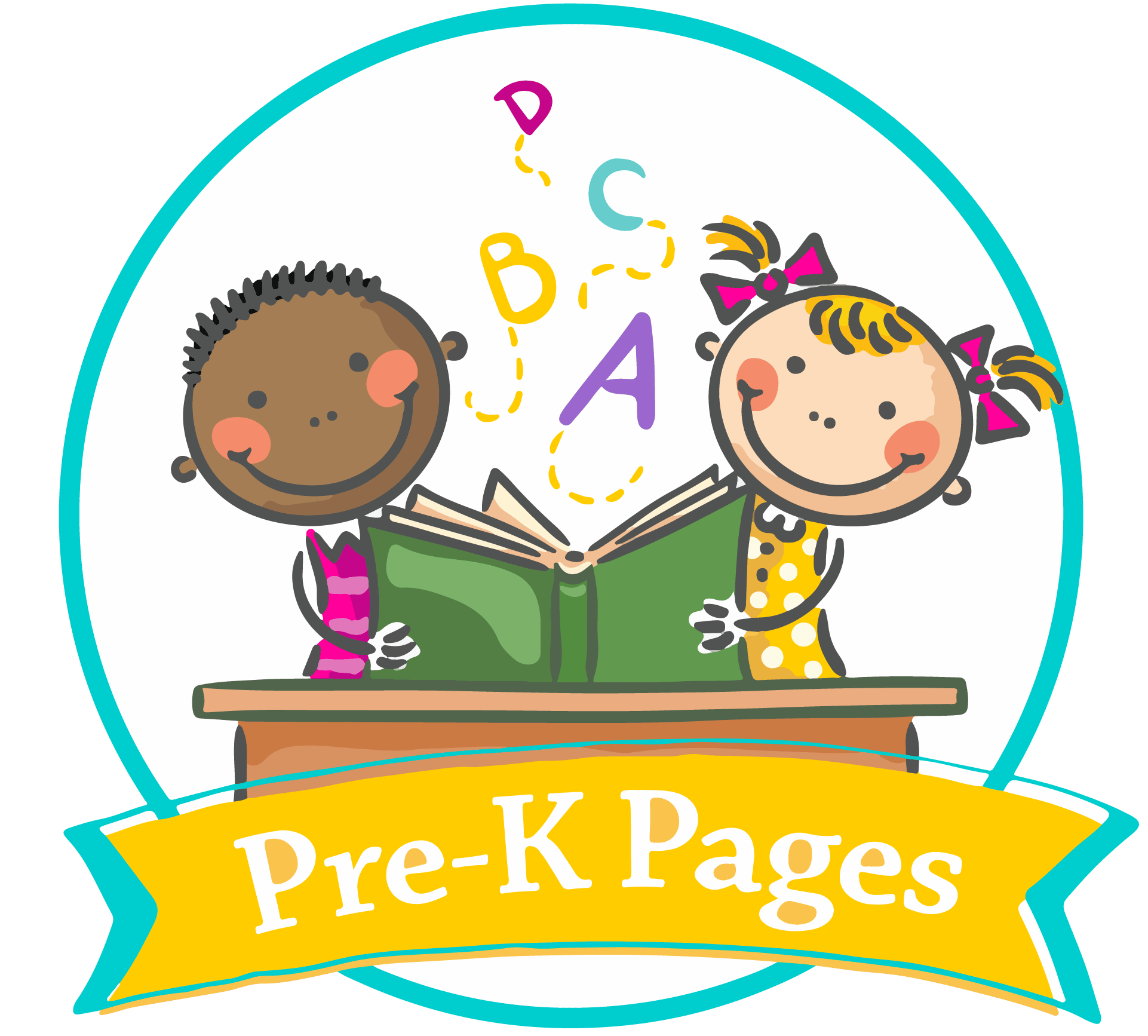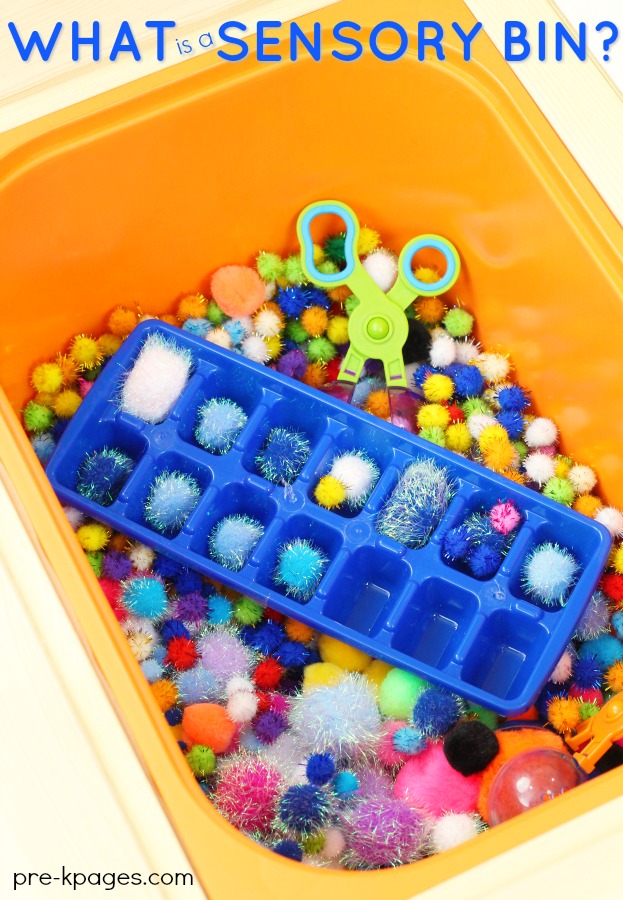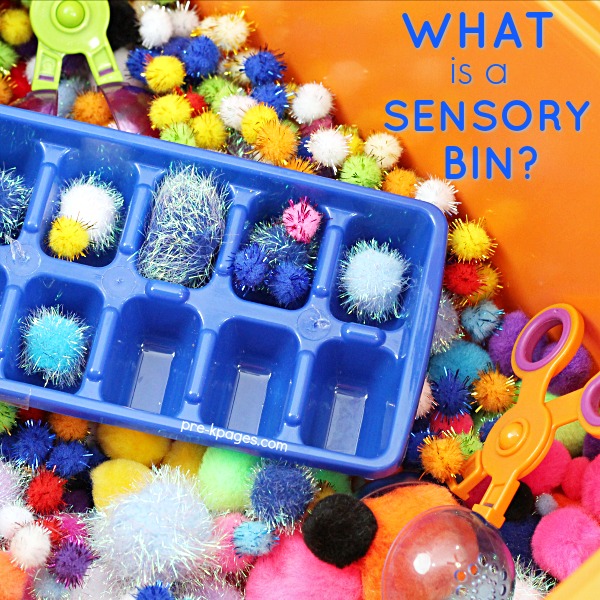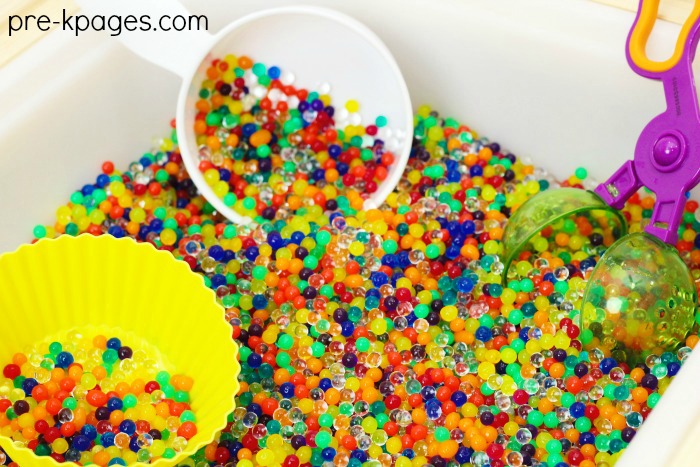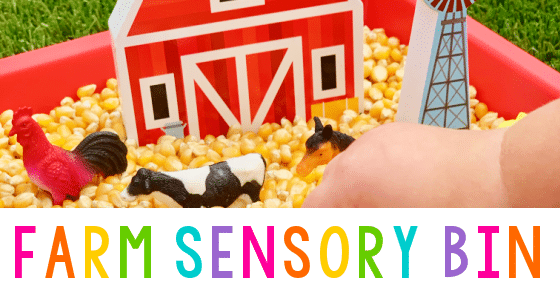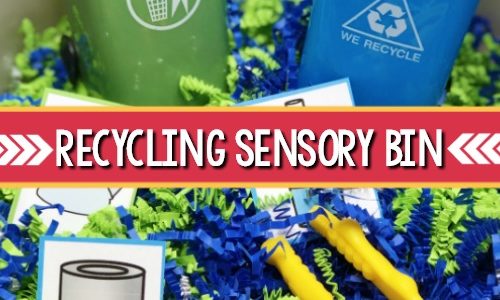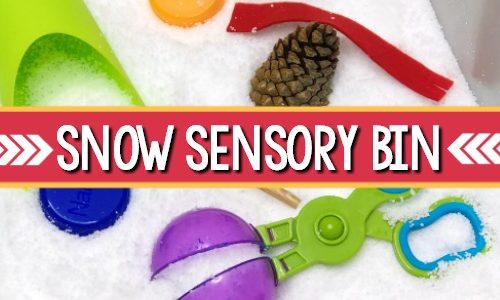Do you want to incorporate more sensory play activities into your toddler, preschool or pre-kindergarten classroom? Read on for our step-by-step guide.
What is a sensory bin?
A sensory bin is typically a plastic tub or a large container of some sort filled with materials and objects carefully selected to stimulate the senses. A sensory bin can be filled with a large variety of different materials such as shredded paper, water beads, water, sand, and more.
What are the benefits of sensory play for children that they can get from a sensory bin?
Sensory bins aren’t just fun, they’re an important part of any early childhood learning experience. Young children learn best when they can touch and feel something, sensory play provides opportunities for children to learn in meaningful ways.
We know that children learn best with their eyes, ears, and hands. When kids can see, smell, touch, and even hear something – the learning experience is more meaningful to them, and therefore more effective so sensory bins make perfect sense in the preschool and kindergarten classroom.
Why Use a Sensory Bin in Preschool?
Sensory play is open-ended, meaning there is no clearly defined outcome of playing with or exploring the materials inside the bin.
Children use their senses and creativity to explore the materials offered in a sensory bin on their own without the expectation of an end product.
To recap, sensory bin play is meaningful to young children and provides opportunities for open-ended play.
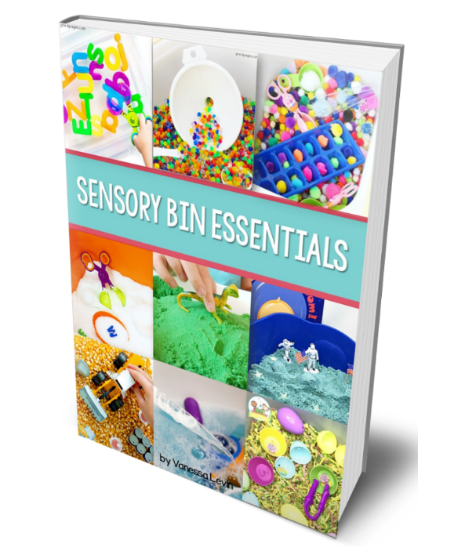
Open-Ended Exploration with a Sensory Bin
A sensory bin is not about keeping kids busy. Instead, sensory bins provide opportunities for children to be successful, regardless of their language or cognitive abilities.
A child who struggles to express himself with language, may touch play snow for the first time and attempt to communicate how it feels.
When the materials inside sensory bins are offered to children without an expectation of a finished product, children use their imaginations and creativity to make sense of the materials in their own way. This experience is often referred to as open-ended exploration.
Can Sensory Bins Be Educational?
Yes! Having a sensory bin in the classroom can support a wide variety of academic skills. I’ve listed just a few of those skills for you below:
- Oral language development
- Creativity
- Imagination
- Capacity
- Volume
- Fine motor skills
- Measurement
- Critical thinking skills
While it’s true that sensory bins can be messy, the benefits for learning far outweigh the negatives. Place a few small dustpans and brooms near your sensory bin and invite children to clean up any messes that they make after they’re finished playing. Small dustpans and brooms can often be purchased at your local dollar store.
If you’re creating a sensory bin for your child to play with at home, consider placing the bin outdoors or on a hard surface such as tile so any messes can be cleaned up quickly and easily.
If you have a small space and don’t have room for a large bin or full-blown sensory table, plastic dish tubs from the dollar store also work well as individual sensory bins. Dish tubs make great sensory bins because you can stack them on a shelf on in a cupboard when they’re not being used.
What Materials Do You Put as Fillers Inside a Sensory Bin?
The possibilities for sensory bin tools and materials you can use to fill sensory bins are endless! Here are just a few of my favorite sensory bin fillers listed for you below.
- Water beads
- Aquarium rocks
- Plastic pellets
- Kinetic Sand
- Colored Rice (use rubbing alcohol and food coloring to color)
- Colored Pasta
- Beans
- Pom-Poms
- Shredded Paper
- Cotton Balls
- Moon sand
- Water with ice cubes for winter unit
- Strips of holiday wrapping paper and bows for holiday unit
- Dirt with plastic gardening tools, plastic pots
- Dirt with plastic snakes and bugs
- Insta Snow
- Easter grass and plastic eggs with surprises hidden inside
- Oats
- Corn
- Wheat
- Packing peanuts
- Feathers
- Birdseed
- Buttons
- Various sizes of gourds for fall
- Colored chickpeas
Some early childhood programs prohibit the use of food items in sensory bins for various reasons. Others prohibit the use of certain items such as shaving cream and water beads for safety reasons. Whatever type of program or setting you work in, it is always wise to use your best judgment when it comes to the materials you put inside your sensory bins.
Sensory Bin Themes
The sky’s the limit for sensory table & sensory bin themes! Here are 5 of our favorites:
- Fall Sensory Bin
- Halloween Sensory Bin
- Winter Sensory Bin
- Gingerbread Sensory Bin
- Valentines Day Sensory Bin
See our full list of 40+ sensory bin theme ideas
Make it easy for kids to play at a sensory bin table
One of the best ways to make it easy for your preschoolers and toddlers to enjoy your sensory bins is to set up a dedicated sensory table, and swap out your sensory bins to fit seasonal themes or children’s interests. Get our sensory table recommendations here!
How often should we change our sensory table themes?
If you want to increase interest and engagement then you’ll want to change out the sensory table themes and materials to keep things fresh.
When you change themes, it helps their vocabulary and oral language development. When they plant a garden or build a snowman in the sensory table that in turn builds new language skills.
What’s the best storage solution for sensory bin fillers?
I like to use a shallow white plastic storage container that is 9×12”, the one I used was purchased from Daiso. But you can check Ikea for a similar one called Kuggis that are heavier and bigger. But they do not have a locking mechanism on top.
What other tools can I include in our sensory bins?
What kind of tools besides plastic spoons and cups can you add? Here is a list of sensory table tools and toys I like to add to my sensory tables.
Are there any materials we shouldn’t put in our sensory bins?
You have to be aware of choking hazards in your sensory bin fillers and be mindful when choosing filler materials. Do you have special needs children or children who still put items in their mouths? Then make sure to choose your sensory bin materials wisely and carefully.
You can fit your filler material through a choking tube to see if it fits through, if it doesn’t fit through the tube then you can use the materials in your sensory bin.
What products might cause allergic reactions?
Certain materials have chemicals that may produce allergic reactions, things like bird seeds that may contain nuts and certain wheat products.
